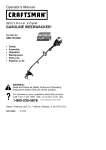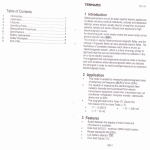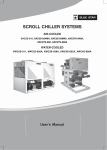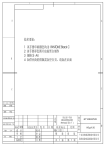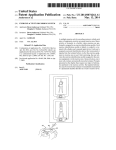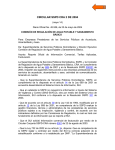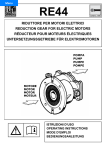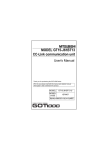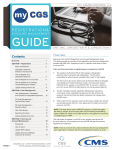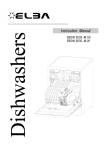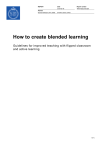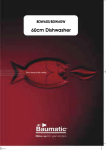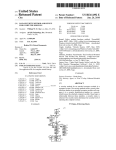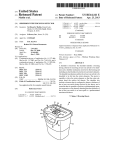Download @ HOME
Transcript
USO0RE44650E (19) United States (12) Reissued Patent (10) Patent Number: US RE44,650 E (45) Date of Reissued Patent: Dec. 17, 2013 Anderson et a]. (54) EXERCISE ACTIVITY RECORDING SYSTEM (76) Inventors: Brent Anderson, Kirkland, WA (U S); Douglas E. Nichols, Redmond, WA (U S) 5,931,763 A 5,944,633 A 8/1999 Alessandri 8/1999 Wittrock 5,947,869 A * 9/1999 (Continued) (21) Appl. No.: 13/452,812 (22) Filed: FOREIGN PATENT DOCUMENTS WO WO WO Apr. 20, 2012 Related US. Patent Documents 96/26495 A1 2005/099827 A3 2010/117616 A3 Reissue of: (64) 8/1996 10/2005 10/2010 OTHER PUBLICATIONS Patent No.: Appl. No.: 7,699,752 Apr. 20, 2010 12/383,469 Filed: Mar. 23, 2009 Issued: International Search Report received in International Application No. PCT/US2005/011734, dated Aug. 25, 2006, 2 pages. (Continued) U.S. Applications: (63) Continuation-in-part of application No. 10/819,052, Primary Examiner * Glenn Richman ?led on Apr. 6, 2004, noW Pat. No. 7,507,183. (74) Attorney, Agent, or Firm *Davis Wright Tremaine (60) Provisional application No. 60/461,204, ?led on Apr. 7, 2003. LLP; Heather M. Colburn (57) (51) Int. Cl. A63B 15/02 (52) US. Cl. ABSTRACT A multiple exercise activity recording system in Which each (2006.01) piece of equipment, exercise movement exercise area, ?tness See application ?le for complete search history. activity or biometric in a facility Where exercises are pre formed is assigned to an exercise identi?cation module. Each exercise identi?cation module is linked or coupled to a ter minal With a display and a manual input device. Each user is References Cited assigned a personal identi?cation device that is presented or inputted into the terminal before or after the exercise equip USPC .......................... .. 482/1; 482/8; 482/9; 705/2 (58) Shea ............................... .. 482/8 Field of Classi?cation Search None (56) ment or exercise area is used. After exercising, the user acti vates the exercise identi?cation module assigned to the exer cise equipment or to the exercise area. Upon activation, one or U.S. PATENT DOCUMENTS 4,283,712 A 8/1981 Goody 5,059,778 A 10/1991 ZouZoulas et al. more sub -routines automatically run in the terminal. Prompts 5,387,164 5,473,831 5,474,090 5,478,295 5,516,334 5,598,849 5,890,997 2/1995 12/1995 12/1995 12/1995 5/1996 2/1997 4/1999 presented on the display then request user input of informa tion pertinent to the exercise activity. The inputted informa A A A A A A A Brown, Jr. Locke Begun et a1. Fracchia Easton Browne Roth tion may be stored in the terminal or immediately transmitted to a permanent member data ?le on a local or remote server. 26 Claims, 6 Drawing Sheets TEMP. USER DATA FILE EXERCISE COILECTION ACT. DATA S/W FROG. ,WIRELESS REC'R- MEDICAL FACILITY USER DATA FILE @ HANDHELD RUDE“ oevrce ip-——--~--- ' UPLINK l LOCAL “33/ ! TERMINAL"i:|_ '7 SERVER WAN No‘ 9_: am aAsE/l:|_ omen PROGRAM LOCATIONS EXECISE Q ACTIVITY souRcE s/w PROGRAM _r=rmsss TOOLS _ _ _ _ _ _ _ _ _ _ FITNESS TOOLS OTHER HEALTH cLuBs ID T49 _ _ _ HOME COMPUTER s/w PROGRAM _ _ _ _ _ _ _ _ _ _ _ _ _ __-| PBIM. MEMBER DATA FILE US RE44,650 E Page 2 (56) References Cited U,S_ PATENT DOCUMENTS 6,050,924 A 6,244,988 B1 6,358,188 B1 6,447,424 B1 6,506,142 B2 4/2()()() 6/2001 3/2002 9/2002 1/2003 2003/0226695 A1 * 12/2003 2005/0064995 A1* 3/2005 2006/0149415 2007/0016444 2007/0067303 2008/0126929 2008/0300109 Shea Delman Ben_Yehuda et a1‘ Ashby et a1. Itoh et a1. A1 A1 A1 A1 A1 7/2006 1/2007 3/2007 5/2008 12/2008 Mault ...................... .. 177/25.16 Shitan ............................. .. 482/8 Richards Holkkola Linjama et al. Bykov Karkanias et a1. OTHER PUBLICATIONS glligrlvililal 482/8 International SearchReportreceivedinInternationalApplicationNo. 637933607 B2 * 9/2004 Neil ........ ..'...IIIIIIIIIIIIIIIIIIII: 482/8 6,796,927 B2 * 9/2004 Toyama 482/8 6,827,670 B1 * 12/2004 Stark et 31, 2182/9 PCTMSZOlO/02829Z, dated Oct‘ 26, 2011, 2 Pages Mantoro, et a1., “Toward the Recognition of User Activity Based On User Location in Ubiquitous Computing Environments,” Interna 7,()56,265 B1 * tional Journal of Computer Science and Security, vol. 2(3), Aug. 3, 6/2006 Shea , , , , , , , , , , , 2001/0053735 A1* 12/2001 Cohen et al. 2002/0086774 A1* 2003/0158014 A1* 7/2002 Warner .... ... ... , , , ,, 4g2/g 482/902 . . . .. 2008,1211 l-59~ 482/8 8/2003 Valentin-Sivico .............. .. 482/8 * cited by examiner US. Patent Dec. 17, 2013 Sheet 2 of6 US RE44,650 E US. Patent Dec. 17, 2013 Sheet 3 of6 US RE44,650 E US. Patent PZHOSt/MDEmF Dec. 17, 2013 Sheet 4 of6 US RE44,650 E US. Patent Dec. 17, 2013 Sheet 6 of6 US RE44,650 E US RE44,650 E 1 2 EXERCISE ACTIVITY RECORDING SYSTEM or ?tness center, such as doctors, therapists, managed health care providers, corporate wellness program administrators, etc., who have an interest in the health and well-being of Matter enclosed in heavy brackets [ ] appears in the original patent but forms no part of this reissue speci?ca particular health club members. Two basic approaches have been attempted toward the goal of recording exercise activity onto a digital medium: “active tion; matter printed in italics indicates the additions made by reissue. network systems” and “scripted training systems.” Active network systems deploy a local electronic network in the health club with each exercise machine equipped with a display monitor, data input means and sensors, and operat This utility patent application is a continuation in-part application of the Utility US. Pat. No. 7,507,183, issue date ing as a data collection node. The health club member iden Mar. 24, 2009, (Ser. No. 10/819,052), ?ledApr. 6, 2004 which ti?es himself or herself to a particular machine or workout is based on the provisional patent application (Ser. No. 60/461,204) ?led on Apr. 7, 2003. pad at the workout station. Upon completion of the exercise, BACKGROUND OF THE INVENTION workout station is transmitted to a central server where indi station via entry of a personal identi?cation number on a key certain performance information collected by sensors at the 1. Field of the Invention This invention relates to exercise metrics recording sys tems, and more particularly, to exercise metrics recording systems located in health club/ gym facilities that offer differ ent pieces of exercise equipment and exercise activities to its members. 2. Description of the Related Art There are approximately 22 thousand ?tness centers and health clubs in the United States serving approximately 40 million members. The health club industry is characterized by rapid growth in club members (8% per annum) and an explo sion in exercise related activities and equipment. There has also been tremendous growth in information related to the optimal use of exercise equipment including: the best use of 20 exercise movements. Active network systems encounter problems dealing with any equipment that is mobile or capable of being employed in 25 30 activity-related exercise (e.g., aerobic dancing; running; bas ketball; etc). Additionally, the provisioning of electrical network monitors, data input means, and sensors at eachpiece of the networked equipment result in high capital installation costs and high recurring maintenance costs. Active network 35 e?t of time spent exercising, most health clubs offer profes sional training services. Professional training services sup port the goals of maximizing the bene?t of time expended toward exercise, injury avoidance, and maintaining a long term focus to a given exercise regime. Professional training multiplicities of exercise movements. Free weights are the most obvious example of exercise equipment that cannot be linked in an active network system. In addition to problems accommodating data input from some types of exercise equipment, active network systems do not support tracking of power to active networked systems and the installation of time devoted to exercise, long term impact of speci?c exercise activity, avoidance of injury, and preferred combinations of exercises. To help individual health club members maximize the ben vidual exercise records are stored. Active network systems are effective where exercise equipment operates at a ?xed location in the gym or ?tness center, and where each piece of exercise equipment in the network supports only one or two 40 systems are also costly to expand as new exercise machines and methods are brought into the health club. The second means to record exercise-related activity involves the use of dedicated software programs operating on PDAs or similar handheld devices. Exercise software pro grams fall into two categories: “menu-driven database pro grams” and “scripted exercise routine systems.” services (as currently offered) require the trainer to directly participate in his or her clients’ exercise sessions to observe Exercise menu-driven programs involve simple database and track activity and performance. Direct participation by lookup programs applied to the tracking of ?tness activity. the professional trainer in most or all of his or her clients’ exercise sessions carries with it a number of negative 45 attributes, including very high service costs, advance sched uling requirements for exercise sessions, regimentation of recreational workout activity into ‘hard core’ training ses sions and, for some, a ‘loss of privacy’ in exercise activity that many health club members view negatively. 50 An effective exercise metrics recording system enabling individuals to independently record their exercise activity in a digital format would permit ?tness professionals to effec tively counsel and/or train the individual system member without necessitating the trainer’s direct participation in each Using a PDA or similar handheld device, the health club member scrolls through a preprogrammed menu of com monly available exercises, identi?es his or her intended exer cise activity, and enters certain performance information into the handheld device upon completion of the exercise. The principal problem with menu-driven database programs as applied to health and ?tness records is the length and com plexity of the menu necessary to accommodate the literally thousands of exercise options available in a typical health club. The burden of cycling through available workout options to locate the desired entry point in the database pro of the client’s day to day workouts. Such an exercise metrics gram has rendered menu-driven database programs too bur densome for most health club members and impractical as recording system would also eliminate advance scheduling effective exercise metrics tracking systems. US. Pat. Nos. and aesthetic problems associated with the use of profes sional training services. Most important, such an exercise 4,493,485; 4,409,992; 4,408,183; and 5,890,997. Scripted exercise records systems exist in multiple forms. metrics recording system would permit professional counsel 55 60 In their simplest embodiment, a piece of paper can be carried ing services to be rendered more ef?ciently at prevailing price through a work out with an exercise program written on it, as levels, and enable health clubs to provide a much broader range of ?tness training/counseling services to address the needs and price constraints of the majority of health club the User follows the prescribed routine he/ she checks boxes and writes down performance data. Systems have been devel oped to simplify the task of data entry and data conversion into a digital format by introducing a PDA or similar hand held device con?gured to store user exercise performance members. Finally, the digital exercise and ?tness records produced by such an exercise metrics recording system could be provided to third parties not a?iliated with the health club 65 data relative to an exercise script which is carried on the PDA US RE44,650 E 4 3 like device or recorded on a Work out card to be read by the It is another object of the present invention to provide such PDA. There are many number of innovations relative to script based exercise records systems, but the identi?cation of these script based exercise record systems as “related art” is prob members to easily record various exercise activities in the a system that uses handheld devices or terminals that alloW facility. It is another object of the present invention to provide such a system that provides exercise machine or exercise activity related sub -routines to the member that instructs the member regarding the type of data to be inputted into the handheld device to terminal by the member after the exercise is com lematic. Scripted systems simply do not meet the challenge of identifying What exercise activity/ s a User elected to perform during a given Work out. Rather than address the multiple thousands of combinations related exercise data source, and possible combinations of Weight used, repetitions completed, time, distance, speed, resistance level etc., scripted systems pleted. It is another object of the present invention to provide such alloW the User to record performance against a narroWly de?ned exercise program. The user performs the prescribed exercise and then records certain performance information by a system that alloWs health club trainers the option to selec tively program the handheld device or terminal for speci?c members instructing the members to include or more speci?c types of exercise and the exercise level to be preformed on those recommended exercises. hand or into a PDA or similar handheld device Which contains the exercise script. The limitations placed on data input sources by script based exercise records systems represent a fundamental difference relative to the subject invention and other “related art” described herein. Script-based exercise systems necessarily require members to strictly folloW a pre scribed training program in order to track performance. While 20 It is another object of the present invention to provide such a system that is relatively inexpensive to assemble, install and maintain. It is another object of the present invention to provide such a system that uses only handheld devices or terminals that are mo st health club members folloW generaliZed patterns in their exercise and recreation The majority of health club members uniquely con?gured and provided by the health club for use in do not strictly folloW training programs, (The average health the health club. club member being over 30 years old and more interested in maintaining a reasonable level of ?tness than running a mara It is another object of the present invention to provide such 25 thon or “body sculpting”. Accordingly, script-based systems It is another object of the present invention to provide such have enjoyed limited acceptance among health club mem bers. Finally, While Script based systems are not precisely “related art,” a second issue is Worth noting that has kept these systems from enjoying Wide applications in the health and a system that does not require a member to perform exercise 30 members’ exercise records may be aggregated and quantita tively or qualitatively evaluated, and shared. 35 individual records to address member exercise activity pre formed aWay from the member’s home gym and further to alloW for the distribution of individual exercise records to 40 result being relegation of script based systems to treatment related exercise programs (Health care provider prescribed) and limited acceptance by interne trainers. herein above. The neW system Will differ from existing meth ods, offering its members easy and ?exible operation unen cumbered by scripted exercise routines Which are directive in nature. Such a system should accept data input from any 45 It is another object of the present invention to provide such a system that can deploy statistical analysis and data base tools against a centrally stored collection of, individual exer cise records to provide business and public interest related data mining against the system’s population of individual records. 50 ?tness data source including activity-based Workouts (e.g., aerobic dancing; running; basketball; etc.), stretching, all forms of resistance training (including exercises using free Weights), and biometric monitoring devices. In addition sys interested and authorized third parties (healthcare providers, Weight loss clinics, insurance providers, DoD [force readi ness] Etc.) A need exists for a neW exercise metrics collection system for a health club capable of collecting, transferring, storing, and managing individual exercise records of its members, Without the operating restrictions and high costs described It is another object of the present invention to provide such a system that can centrally store, protect and discretely dis tribute individual exercise records in such a Way as to alloW in conjunction With the script based system. In fact, script based exercise records systems operate to introduce intemet/ non resident trainer competition into a health club, threaten ing a major revenue source for the typical health club. The end activity according to a prescribed sequence. It is another object of the present invention to provide such a system that can be linked to other health clubs so that ?tness club market. An exercise script for a PDA can be Written by anyone for use by a health club member in the gym. While the health club operator can control perimeter facility access, the health club operator cannot control access to individual exercise appara tus or compel the use of his or her club based training services a system that does not require the direct participation of a trainer during or after every exercise session. 55 It is another object of the present invention to provide such a system that deploys softWare tools Which apply statistical analysis and ?tness related information/principles against an individual’s exercise records to aid in maintaining safe and effective exercise patterns. These objects are met by an exercise activity records sys tem disclosed herein that enables users to easily record dif ferent exercise activities performed in the facility. In a ?rst embodiment, the system includes a portable handheld device tem should be materially less expensive to install and main tain than are active netWork systems, and must provide for control over access to the system, particularly its exercise capable of being pre-programmed by the trainer for a speci?c identi?cation component member that is then used by the member to record exercise activities. The system also includes a unique identifying 60 SUMMARY OF THE INVENTION “exercise identi?cation module”, hereinafter referred to as an It is an object of the present invention to provide an inex pensive, easy to use exercise recording system speci?cally designed for use in a health club and other sports and ?tness 65 EIDM, attached to or located in the proximate vicinity of an exercise activity source. The handheld device includes a dis play monitor, a data input means, and an EIDM interrogation means used query the EIDM. During use, the member acti facilities Which offers different pieces of exercise equipment vates the handheld device Which executes an exercise data and exercise activities to its members. collection softWare program loaded into the Working memory US RE44,650 E 5 6 of the handheld device. When the member selects a piece of embodiments, a sub-routine speci?c to the exercise activity source is automatically generated. In the second embodiment, the identi?cation sequence is directed toWards identifying the user to the terminal and to the speci?c exercise selected by the exercise equipment or an exercise activity, (eg Weight lift ing), the EIDM interrogation means is activated and used to interrogate the EIDM. When the EIDM is identi?ed, the exer cise data collection softWare program automatically executes a software sub-routine speci?cally designed for the indi vidual and the speci?c exercise activity source associated system user. The EIDM is noW in a ?xed location as are the terminal With the exercise date program, the exercise speci?c sub-routines and the processor. The only mobile component is the user’s identi?cation codes or input device. Also, input ted information may be stored in the terminal or immediately With the EIDM. More speci?cally, the sub-routine presents a data entry page on the display monitor. The data entry page identi?es the exercise machine or activity, the type of exercise transmitted to a permanent member data ?le on a local or to be completed, and presents a plurality of prompts request ing speci?c information from the member regarding the exer cise activity performed on the exercise activity data source. The information that is inputted into the handheld device remote server ber data ?le on the handheld device or transmitted directly to In both embodiments, the system may includes a local server located in the facility With permanent member data ?les that contains the inputted records from the handheld devices or terminals used by members in the club. In another embodiment, the local server is replaced by an uplink termi using the input means is directly stored in a temporary mem a permanent member ?le stored on a local server located in nal connected to a remote server located in a netWork opera the health club. If the information is stored in a temporary member data ?le on the handheld, it is later uploaded to the tions center, hereinafter referred to as a NOC, that via the Internet. In both embodiments, a data base softWare program local server. Each time the member moves to a neW exercise 20 designed to collect the uploaded records in the handheld data activity source, the EIDM interrogation means and the EIDM are used to quickly identify the exercise activity data source and present the proper sub-routine associated With the device’s or terrninal’s temporary member data ?le and then present the information to the trainer and/or member When connected to the server. exercise activity. In another embodiment of the invention, the exercise activ ity source in the facility Where exercises are preformed is 25 colorations unique to exercise metrics and associated directly or indirectly to the member’s speci?c Workout history. The system Will cross track and display to the health and, ?tness professional any number of relationships and data correla assigned to an EIDM but each EIDM is linked or coupled to a stationary terminal connected to or located near the exercise activity source. The terminal, Which may be linked exclu sively to one exclusively exercise activity source and one EIDM or may be linked to multiple exercise activity sources and EIDMs, is connected to a display and an optional manual input device. The EIDM associated With each exercise activ ity source may be located at or near the exercise activity source or it may be mounted on the terrninal’s front panel or on a multiple exercise activity demonstration board. Loaded into the memory of the terminal is an exercise data collection softWare program and user data ?le. Each user is assigned a personal identi?cation code Which must be manually inputted into the terminal or assigned an electronic identi?cation device that interfaces With the EIDM or another compatible input device to input the user’ s identi ?cation into the terminal. The personal identi?cation code or electronic identi?cation device transmits the user’s identi? cation information to the terminal before or after the exercise equipment or exercise area is used. An example of an elec tronic identi?cation device assigned to a user is an I-button. The system Will also use a tool set of softWare programs, hereinafter referred to as a ‘tool set’, Which support data 30 35 tions to the member’s Work outs. In addition, the tool set Will maintain and display state of the art information to ?tness professional counseling the member identifying areas of con cern/progress and offering alternative course of action (in terms of exercise) to effectively counsel the member relative to his/her exercise regime. Using the above-described device, a method of recording the exercise routines in a health club, an exercise facility or medical facility is also provided. During use, the member 40 45 selects a health club or facility With different exercise activity data sources each associated With a unique EIDM. When the member visits the health club or facility, he or she may be provided a handheld device as describe above loaded With various softWare sub-routines associated With the EIDMs or a user identi?cation code. As the member moves throughout the health club or facility, he or she performs various exercise activities, and inputs data in response to the sub-routine prompts. When the exercise activity is completed, the tempo During use, the user’s I-button is pressed against a compat rary member data ?le on the handheld device or terminal is ible, terminal linked I-button connected or linked to the ter uploaded to the local server or to the remote server on the minal that automatically transmits the user’s personal identi ?cation code into the terminal. In the preferred embodiment, 50 server or remote server is then used by the trainer to revieW a member’s data ?le. The tool set provides the trainer access to the most recent information relative that members exercise the terminal I-button also acts as an EIDM, Which, When activated by the user’s I-button, automatically informs the terminal Which exercise activity source is selected and also informs the terminal of the user’s identi?cation information. After exercising, the user activates the EIDM associated With the exercise activity source. When the EIDM is acti vated, a sub-routines and prompts relating to the exercise are needs as Well as a backup to the trainer’s oWn record revieW 55 response to the prompts. The key differences betWeen the ?rst and second embodi ments, is that mobile and ?xed components of the system are reversed. In the ?rst embodiment, after the EIDM is activated, a data exchange sequence is initiated by the handheld. In the second embodiment, When the user activates the EIDM, a data exchange sequence is initiated in the terminal. In both insuring that all areas of concern have been identi?ed and addressed by the trainer relative to the member. The subject invention deployed an architecture Which is unique and novel relative to the collection of individual Work out information in a health club environment. then presented on the terminal’ s display. The user then manu ally inputs exercise speci?c information into the terminal in NOC. The ?tness data base softWare program on the local 60 Unlike the prior art active netWork systems identi?ed herein, the subject invention deploys a handheld or a terminal 65 to collect individual exercise records With this step the subject invention becomes an order of magnitude cheaper than active netWork systems. With the elimination of the active netWork approach the subject invention becomes far more ?exible in its operation, alloWing the system to breakaWay from ?xed machine limitations of active netWork systems to embrace US RE44,650 E 8 7 free Weights, basketball, running, handball etc. (and activity FIG. 7 is an illustration of various exercise equipment Which can be expressed as a numeric. shoWing different sub-routines executed to display different Deployment of a handheld or a terminal in the system together With an EIDM With Which the handheld or terminal shares a relationship and the location of that EIDM on or exercise data pages to the member. FIG. 8 is an illustration of the second embodiment of the exercise activity recording system. around its represented exercise activity source alloWs the user to gather data from anyWhere in the health club or facility any time in any order. In this manner, the invention is not con?ned to a scripted Workout and alloWs him/her to simply approach and query the EIDM for the exercise intended rather than run through multiple menus or fumble through a phone book of DESCRIPTION OF THE PREFERRED EMBODIMENT (s) Referring to the accompanying FIGS. 1-8, there is shoWn a system 10 for easily recording the exercise activities per formed With or Without exercise equipment that does not optical symbol tag/REID tags to tell the data collection device require the direct participation of a trainer. The system includes a portable handheld device 15 used to input exercise What exercise the member intends to do next to further the subject invention. By using unique identi?ers relative to each exercise activ ity source at a speci?c site, and by providing an “encrypted” response/disclosure capability for each EIDM, access to the system becomes controllable. The subject invention becomes potentially pro?table to the health club therefore available to information that is uploaded to a local server 95. A ?tness tools softWare program 50 loaded into the Working memory of the local server 95 is used to collect the uploaded records 20 members in a health club environment. training levels. The over aching structure deployed in the subject invention for the transfer handling of data related to individual Workout records insures, (via database softWare and the tool set that the gym members records are made available to ?tness pro The handheld device 15 is lightWeight, portable, and rug gediZed to make it shock, heat, and moisture tolerant. Loaded 25 services. Beyond counseling applications the subject inven tions netWork structure, user authentication functions and 30 source 10 Which sub-routine includes a date/clock function that automatically records start and stop times and the elapsed 35 manually inputted by the member into the handheld device 40 15. The exercise information is then stored in a temporary member data ?le 37 on the handheld device 15 that later is uploaded to a local server 95 via an uplink terminal, a Wireless communication link or a hardWire connection. Each time the member moves to a neW exercise activity data source 10, the 45 EIDM interrogation means and EIDM are used to quickly 50 identify the exercise activity data source 10 and present the proper exercise data entry page 60 and prompts 61 associated thereWith. The exercise data collection softWare program 37 auto matically executes the speci?c sub-routine 80-85 associated With an identi?ed exercise activity data source 10A-10E (see FIG. 7). The exercise activity data source 10 may include a treadmill 10A, a stair machine 10B, an elliptical machine 10C, free Weights 10D, or a Weight machine 10E With a single 55 or a plurality of Weight stations as shoWn in FIG. 7. The the accompanying draWings. In this respect, before explain ing the current embodiment of the invention in detail, it is to be understood that the invention is not limited in its applica tion to the details of construction and to the arrangements of the components set forth in the folloWing description or illus trated in the draWings. The invention is capable of other embodiments and of being practiced and carried out in vari ous Ways.Also, it is to be understood that the phraseology and terminology employed herein are for the purpose of descrip tions and should not be regarded as limiting time for the exercise, as Well as rest intervals betWeen exer cises. The sub-routine 80-85 presents one or more data entry pages 60A-60F With a plurality of prompts 61 displayed thereon each designed to sequentially elicit information presently preferred, but nonetheless illustrative, embodi ments of the present invention When taken in conjunction With attached to or located in the vicinity of the exercise activity data source. When the EIDM is interrogated, the exercise data collection softWare program 35 automatically executes a sub routine 80-85 designed for the speci?c exercise activity data easy to use, installable system Which provides the means to break the requirement for gym based ?tness professional to participate in every member Workout in order to effectively counsel that member. Numerous objects, features and advantages of the present invention Will be readily apparent to those of ordinary skill in the art upon a reading of the folloWing detailed description of into the memory of the handheld device 15 is an exercise data collection softWare program 35 that activates a built-in exer cise identi?cation module interrogation means, referred to as an EIDM interrogation means used to detect a unique EIDM fessionals at the gym and that via tool set/?tness professional combination the member receives stat of the art counseling records capability Will alloW individual ?tness records to be made available to authoriZed and interested third parties. In addition the cumulative data base of memberuser activity and preferences developed for via the system can be “mined” as a data resource for both public and private sector interests. Lastly, and a the core of the subject invention is a simple from the handheld device 15 and store them in a permanent member data ?le 52. The member or authorized individuals can then use the ?tness tools softWare program 50 to revieW the member data ?les to determine the member’s ?tness or exercise activity data source 10 may also be a Weight lifting DESCRIPTION OF THE DRAWINGS station, a basketball court, an aerobic exercise room, a stretch ing mat or room, a jump rope, a heart rate monitor, a blood pressure monitor, etc. (not shoWn). When the exercise activity FIG. 1 is an illustration of the health club exercise record ing system. 60 used to FIG. FIG. FIG. interrogate an EIDM. 3 is a front plan vieW of the handheld device. 4 is a rear plan vieW of the handheld device. 5 is a block diagram of the handheld device. FIG. 6 is an illustration of an exercise data page shoWn on the display monitor. data source 10 is recogniZed, the exercise data collection softWare program 35 automatically presents the exercise data page 60 that presents a plurality of prompts 61 suitable for the exercise activity data source 10. FIG. 2 is a perspective vieW of the handheld device being The EIDM interrogation means and EIDM provide a com 65 munication link betWeen the handheld device and the exercise equipment. In the preferred embodiment, the EIDM interro gation utiliZes an EIDM comprised of a computer chip, a chip US RE44,650 E 9 10 housing (“can”), a pictorial representation of the exercise or activity which the subject EIDM is associated with and a “reader/receiver” incorporated within the handheld capable of powering and communicating with the EIDM via a physi cal contact “1 -wire protocol” data exchange link. The EIDM gram 35, loaded into the handheld device’s working memory, automatically auto-con?gures the device 15 and presents the proper exercise data page 60 for the ?tness exercise activity data source 10. A representative exercise data sheet, shown in FIG. 6, is then presented on the display monitor 25. is a compatible ID tag 40, such as a printed identi?cation label/hieroglyph, a radio transducer, or barcodes capable of On the exercise data page 60 is shown a plurality of prompts 61 that the member responds to after completion of the exercise activity. When the exercise activity is completed, the member manually inputs the data using the keys 26. The inputted exercise activity information is then stored in the temporary member ?le 37 for later uploading to the central being detected or interrogated by the EIDM interrogation means. The local server 95 is designed to receive uploaded tem porary member data ?les 37 from the handheld device 15, use the ?tness tools software program 50 to collect and store the member ?les in permanent member data ?le 52, and then use the ?tness tools software program 50 to evaluate and present the information in the permanent member data ?le 52 to the server 95. As more clearly shown in FIG. 7, each exercise activity data source (10A-10E shown) is assigned a sub-routine 80-84 that presents a speci?c exercise data page 60 A-E to the display monitor 25. The nature of the prompts 61 may be the member or authorized individuals. In a second embodiment of the system, shown in FIG. 2, the local server 95 is replaced by an uplink terminal that connects to a remote server located in or connected to a network operations center, NOC. The Network Operations Center (N OC) provides a central repository for the system’s data base. In addition, the NOC 20 The permanent member data ?le 55 provides a comprehen sive record of his or her cumulative exercise activity and achieved ?tness level. This ?le 55 can then be evaluated and provides a WAN presence to provide records access for club based ?tness professionals working with the system’s users. The NOC also provides the WAN presence by which User records input can be made from sources outside of the gym 25 (from home or “on the road”). The NOC also provides system updates, billing as well as network security and document vidual exercise records or WAN records access to authoriZed 30 source 10) in a facility where exercises are preformed is 35 15 are batteries 28 (AA, AAA or 9 Volt) designed to supply a DC electric current. Mounted on the front surface 16 of the device is an “Identi?cation” button 21. Mounted on the side surfaces 17 of the device 15 are a power switch 22 and an assigned to an EIDM. Each EIDM is linked or coupled to a stationary terminal 120 connected to or located near the exer cise activity source 10. The terminal 120 is coupled to a display 122 and a manual input device 124. Terminal 120 may be used exclusively with one piece of exercise activity source located on the front surface 16 of the device 15. In other embodiments, the input means could be a combination moni tor and “touch screen” functionality (not shown) with the ten numerical keys displayed thereon. Mounted inside the device parties away from the ?tness center who may have legitimate interests in the ?tness level of any particular member. In another embodiment of the invention, shown in FIG. 8, each piece of equipment, exercise movement area, ?tness activity or biometric equipment (called exercise activity records, including but not limited to: treating physicians, rehabilitation, therapy professionals, NCAA and other ath letic interests, Dept of Defense (eg national guard force readiness, corporate wellness incentive programs As shown in FIG. 3, the handheld device 15 includes a display monitor 25 and an input means. In the preferred embodiment, the input means is a set often numerical keys 26 reviewed by club-based ?tness professionals to provide a broad range of counseling services to members, and the record can be provided to medical professionals or other third security functions these functions enable delivery of indi third parties with and interest in individual or group exercise same or different. With some exercise equipment or activity, a second sub-routine 85 and a second speci?c exercise data sheet 60F are presented. 10 or with a plurality of exercise activity sources. The EIDM associated with each exercise activity source 10 may be 40 located at or near the exercise activity source 10 or it may be mounted on the terrninal’s front panel or on a single or mul tiple exercise activity demonstration board 130. Loaded into 45 optional display monitor brightness switch 23. Mounted on the front surface 16 is a function key 24 and an optical reader the memory of the terminal 120 is an exercise data collection software program 35 and a temporary data user ?le 37. Each user is assigned a personal identi?cation code 140 which must be manually inputted into the terminal 120 or assigned a portable user identi?cation device 150 that inter activation button 21. Also, mounted on a side 17 or front faces either directly with the EIDM coupled to the exercise surface 16 is a small speaker (not shown) to provide audible activity source or to the terminal 120, or with an input device 124 attached to linked to the terminal 120. The user identi?cation device 150 contains the user’s per sonal identi?cation code 140 that must be transmitted to the terminal 120. The terminal 120 then uses the user’s personal identi?cation code 140 to determine the user ?le in which to cues to a member, such as a cadence tone during certain 50 exercises. Mounted on the rear surface 19 is an optional belt clip or hook and loop connector pads (not shown). In other embodiments, a biometric security means, such as a ?nger print reader 25, may be included to prohibit inadvertent use of the handheld device by another member during the course of the exercise session. Also, mounted inside the device 15 is an optional wireless transmitter 27 enabling the device 15 to 55 communicate with a wireless receiver 32 connected to the local server 95. The handheld device 15 may also include an optional network connection port 33 enabling the device 15 to 60 communicate directly with the local server 95 or to the uplink terminal. During use, the member activates the handheld device 15 and holds the optical reader 30 to read the ID tag 40 to interrogate and identify the ?tness exercise activity data temporarily store the exercise data. The user’ s personal iden ti?cation code 140 may be inputted or transmitted to the terminal 120 before or after the exercise activity source is used. An example of a portable user identi?cation device 150 assigned to a user is an I-button 150 designed to communicate with a terminal linked I-button 132. During use, the user’s I-button 150 is pressed against the terminal linked I-button 132 and automatically transmits the user’s personal identi? cation code 140 into the terminal 120. In the preferred 65 embodiment, the terminal I-button 132 is also linked to a source 10. Once the ?tness exercise activity data source 10 is speci?c exercise activity source so that it also acts as an identi?ed, the exercise activity collection data software pro EIDM, which, when activated by the user’s I-button 150, US RE44,650 E 11 12 simultaneously informs the terminal 120 Which exercise hardWire transmitting and receiving devices medium for activity source is selected and identi?es the user to the termi nal 120. In the terminal based embodiment, When the EIDM is Wireless communication betWeen the handheld device and the exercise activity data source’s EIDM. activated, a sub-routine and one or more prompts relating to the exercise activity source are then presented on the termi activates the EIDM component on the handheld. When the exercise activity data source 60 is identi?ed, the sub-routine associated 80-84 With the exercise activity data source 10 is Prior to commencing the exercise activity, the member nal’s display 122. The user then manually inputs the exercise performance information into a manual input device 124 coupled to the terminal 120 in response to the prompts. In this embodiment, the mobile and ?xed components of the system are reversed With respect to the ?rst embodiment described above. When the user activates the EIDM, a data automatically executed. The exercise data page prompts 61 are then sequentially presented on the display monitor 25. The member enters data in response to prompts 61 displayed on the handheld device 15 for temporary storage in the hand held device 15 relative to the speci?c exercise. The member exchange sequence is initiated in the terminal Which initiates a user input identi?cation exchange and a sub-routine speci?c repeats this recording process for each exercise performed throughout the course of the exercise sessions. Upon comple to the exercise activity source. The identi?cation sequence is directed toWards identifying the system user to the terminal tion of the exercise session, the temporary data ?les are uploaded into the member’s permanent exercise activity ?le and to the speci?c exercise selected by the system user. The on the local central server 95. Alternatively, the handheld EIDM is noW in a ?xed location as are the terminal 120 With device is placed in the uplink terminal Which automatically uploads the temporary data ?les to the member permanent the exercise data program, the exercise speci?c sub-routines and the processor. The only mobile component is the user’s 20 may be stored in the terminal 120 or immediately transmitted to a permanent member data ?le on a local or remote server. In both embodiments, the complete member records gen erated by system in combination With a centraliZed database for the system’s records storage and records access support the development and application of a set of softWare tools Which Will be regularly update With the most current ?tness information. The tool set is directed toWard providing the ?tness professional Working With a user With the folloWing 25 EIDM on located on or near the exercise activity source, on the terminal, or a demonstration board setup near the terminal 120. The user then exercises on or With the exercise activity source. When the exercise is completed, the user manual inputs his or her identi?cation code into the input means 30 connected to the terminal 120. If the user uses a user and terminal I-buttons, the steps of selecting an EIDM associated With the desired exercise activity source and the user’s iden information With Which to counsel that user toWard the safes most effective, most fun usage of his/her time in the gym. Allocation of time in the gym (strength vs. cardio) (legs vs. arms) (back vs. stomach) etc; Strength and muscle balance betWeen various muscle ?les on a central server on the NOC. The ?tness tools program is then used to revieW the permanent ?les and issue comments and recommendations to the member. With the second embodiment of the system that uses a terminal 120, the user ?rst selects and exercise using the electronic identi?cation device. Also, inputted information 35 ti?cation information are combined. After the EIDM is selected, one or more the user then inputs exercise speci?c data in response to the prompts. The user repeats this record ing process for each exercise performed throughout the groups course of the exercise sessions. Upon completion of the exer cise session, the temporary data ?les are uploaded into the member’s permanent exercise activity ?le on the local central Joint usage during Work outs; Increases or decreases in muscle strength, ?exibility or endurance Allocation of repetitions betWeen muscle groups; Changes in time of day for Workout, Work out duration, rest time betWeen individual exercises; and, Changes is any of the forgoing as they relate to modi?ca 40 server 95. In summary, the method of collecting, transmitting, and recording an exercise routine comprising the folloWing steps: (1) selecting an exercise activity data source each assigned a unique EIDM; (2) selecting a handheld device 15 or a termi tions in Work out activity as a result of an event recorded by the User into the system or as the result of a ?tness 45 nal 120 With user identi?cation input means, said handheld device or terminal including an exercise activity data collec tion softWare program 35 and an exercise identi?cation mod professional’s input to the User by Way of preferred changes to the Users Work out regime. The system Tool Will revieW User health and ?tness activ ity and performance against “norms” for his/her age sex, time in the gym, Etc. Tools Will high light “trouble areas” identi ?ed by this analysis and offer the ?tness counselor input as to ule interrogation means, said exercise activity data collection softWare program 35 used to automatically execute a plurality 50 unique EIDM and store the exercise activity information in a temporary member ?le 37; (3) connecting the handheld possible changes to the Users exercise activity. device or terminal to a server 95 and uploading the data in the The system tool Will revieW User health and ?tness activity and performance against inputs to the Users personal exercise record by health healthcare professionals, therapists etc. and temporary member ?le to a permanent member ?le; (4) load 55 display areas of concern or interest unique to that speci?c user. SYSTEM OPERATION 60 The folloWing operating scenario describes the system could be replaced With a radio frequency or infrared trans mitter and receiver or other Wireless or physical contact/ ing a ?tness tools softWare program 50 into said server 95, said ?tness tools program 50 used to evaluate and revieW the data in the permanent member ?le 37 to determine the ?tness level of a member and recommend future exercises. While a preferred embodiment of the exercise recording system has been described in detail, it should be apparent that modi?cations and variations thereto are possible, all of Which fall Within the true spirit and scope of the invention. With respect to the above description then, it is to be realiZed that using the ?rst embodiment of the system that uses an exercise identi?cation module interrogation means and the EIDM as an optical reader 30 and ID tag 40, respectively. It should be understood, hoWever, that the optical reader 30 and ID tag 40 of prompts 61 that request activity information for each 65 the optimum dimensional relationships for the components of the invention, to include variations in siZe, materials, shape, form, function and manner of operation, assembly and use, are deemed readily apparent and obvious to one skilled in the US RE44,650 E 14 13 12. A physical exercise records system, comprising: art, and all equivalent relationships to those illustrated in the drawings and described in the speci?cation are intended to be encompassed by the present invention. For example, the term “exercise activity data source” is used to encompass every a. an [exercises] exercise activity data source; b. an exercise coupled electronic contact identi?cation but ton coupled to said exercise activity data source; c. a terminal linked or coupled to said exercise coupled exercise equipment activity or non-equipment activity. The term “Wireless communication link and EIDM” are meant to encompass all means of Wireless communication in Which an electronic contact identi?cation button [couple] coupled to said exercise activity data source, said terminal including a display, means for inputting data into said terminal, means for identifying an means for identifying a user, and Working memory; and[,] d. an exercise softWare program loaded into said Working memory of said terminal, said exercise softWare pro exercise activity is recognized by the handheld device or terminal. Therefore, the foregoing is considered as illustrative only of the principles of the invention. We claim: 1. A physical exercise records system, comprising: a. a plurality of [exercises] exercise activity data sources; b. a unique identifying EIDM associated With each said exercise activity data source; 0. gram runs a plurality of sub-routines each associated With one said EIDM, said sub-routines [presents] a terminal linked or coupled to each said ElDMused With present on said display at least one exercise data entry said exercise data sources, said terminal including a page after said EIDM is identi?ed and interrogated that queries a user to input exercise activity data relevant to the exercise activity data source. 13. A method for recording and monitoring exercise activi ties by members of [a] an exercise facility that contains a plurality of exercise activity data sources each associated With an identi?able EIDM, said exercise facility includes at least one terminal coupled to said [EIDM’ s] EIDMs used With a plurality of terminals, said terminal includes a display, [a data input means,] and a softWare program that executes a display, means for inputting data into said terminal, means for identifying an means for identifying a user, and Working memory; and[,] 20 d. an exercise softWare program loaded into said Working memory of said terminal, said exercise softWare pro gram runs a plurality of sub-routines each associated With one said EIDM, said sub-routines [presents] present on said display at least one exercise data entry page after said EIDM is identi?ed and interrogated that queries a user to input exercise activity data relevant to the exercise activity data source. 2. The physical exercise records system, as recited in claim 25 1, Wherein said unique identifying EIDM associated With 30 EIDM speci?c sub-routine that requests speci?c exercise per formed at the exercise activity data source to be manually inputted into said terminal, said method comprising: each said exercise activity data source is an identi?cation contact button. 3. The physical exercise records system, as recited in claim 2, Wherein said identi?cation contact button is attached to said exercise activity data source. 4. The physical exercise records system, as recited in claim a. selecting an exercise activity data source coupled or linked to an EIDM and to said terminal; b. performing an exercise With said exercise activity data source; 2, Wherein saidmeans for identifying a user is a contact button c. identifying the user on said terminal; and[,] d. inputting data into said display on said terminal in response to [said] a sub-routine page that pertains to the manually pressed against said contact button attached to said exercise performed With said exercise activity data exercise activity data source. 5. The physical exercise records system, as recited in claim 35 source. 40 14. A system for use with a user, the system comprising: 3, Wherein said means for identifying a user is an identi?ca tion contact button assigned to a speci?c user that is selec a) a plurality of exercise activity data sources; b) a unique identi?ring EIDM associated with each ofthe tively pressed against said contact button attached to said exercise activity data sources; c) a terminal linked or coupled to each of the EIDM used with the exercise data sources, the terminal including a exercise activity data source. 6. The physical exercise records system, as recited in claim 2, Wherein said identi?cation contact button is attached to said terminal. 7. The physical exercise records system, as recited in claim 45 display, an input device configured to receive inputfrom the user, and a working memory; and d) an exercise software program loaded into the working memory of the terminal, the exercise software program 2, Wherein saidmeans for identifying a user is a contact button manually pressed against said contact button attached to said 50 7, Wherein said means for identifying a user is an identi?ca tion contact button assigned to a speci?c user that is selec tively pressed against said contact button attached to said 55 exercise activity data source EIDM interrogation means and said EIDM is an optical reader and a compatible tag element capable of being interrogated by said optical reader. 9. The physical exercise records system, as recited in claim 1, Wherein said EIDM interrogation means and said EIDM is a RFID reader and compatible tag element. 10. The physical exercise records system, as recited in claim 1, further including a server capable of receiving the input records from said terminal. 11. The physical exercise records system, as recited in claim 10, further including a Wireless communication link betWeen terminal and said server. runs a plurality ofsub-routines each associated with one of the EIDM the sub-routines presenting on the display exercise activity data source. 8. The physical exercise records system, as recited in claim 60 at least one exercise data entry page after a particular EIDM is identi?ed and interrogated, the at least one exercise data entry page querying the user to input exer cise activity data relevant to the exercise activity data source associated with the particular EIDM 15. The system ofclaim 14 for use with a portable user identi?cation device associated with the user, the portable user identi?cation device comprising a personal identifica tion code, wherein the terminal is further configured to receive the personal identification code from the portable user identi?cation device. 16. A device for use with a user, the device comprising: a reader configured to read each of a plurality of unique 65 identifiers, each of the plurality of unique identi?ers being associated a di?erent exercise activity data source; US RE44,650 E 15 16 at least one ofthe sub-routines after a selected one ofthe at least one processor connected to the reader; plurality of symbols is read by the reader; a memory connected to the processor, the memory com prising aplurality ofsub-routines executable by the at least one processor, the at least one processor executing at least one ofthe sub-routines after a selected one ofthe 5 plurality of unique identifiers is read by the reader; an input device configured to receive input from the user; and a display device connected to the processor, the executing at least one ofthe sub-routines instructing the processor to display on the display device a data entry page that queries the user to input exercise activity data, using the input device, relevant to the exercise activity data source associated with the selected one of the plurality of 22. The system ofclaim 2], wherein the symbol is posi tioned on or near the associated exercise activity data source. 23. The system ofclaim 2], wherein the reader is an optical reader and the symbol is an optical symbol readable by the unique identi ers. optical reader 1 7. The device ofclaim 16, wherein the reader is an optical reader and the unique identifier is a symbol readable by the 24. The system ofclaim 2], further comprising a server, wherein the handheld device further comprises a wireless transmitter configured to communicate wirelessly with the server and transmit at least a portion of the exercise activity optical reader. 18. The device ofclaim 16, wherein the reader is a RFID reader and the unique identifier is a RFID tag readable by the data input by the user to the server. RFID reader. 19. The device ofclaim 16for use with a server, further 25. The system ofclaim 2], further comprising a server, wherein the handheld devicefurther comprises a communi comprising: cation connection configured to communicate with the server a wireless transmitter configured to communicate wire and transmit at least a portion of the exercise activity data lessly with the server and transmit at least aportion of the exercise activity data input by the user to the server 20. The device ofclaim 16for use with a server, further input by the user to the server. 26. A physical exercise records system comprising: a) a plurality of exercise activity data sources; b) a unique identi?ing EIDM associated with each said comprising: a communication connection configured to communicate with the server and transmit at least a portion of the exercise activity data source; and c) a terminal linked or coupled to each said EIDM used exercise activity data input by the user to the server. 2]. A system for use with a user, the system comprising a with said exercise data sources, said terminal including: a display, plurality ofsymbols, each symbol uniquely identi?ing a dif meansfor inputting data into said terminal, and ferent one ofa plurality ofexercise activity data sources; and a handheld device comprising: a reader configured to read each of the plurality of sym bols; at least one processor connected to the reader; a memory connected to the processor, the memory com prising aplurality ofsub-routines executable by the at least one processor, the at least one processor executing an input device configured to receive input from the user; and a display device connected to the processor, the executing at least one ofthe sub-routines instructing the processor to display on the display device a data entry page that queries the user to input exercise activity data, using the input device, relevant to the exercise activity data source associated with the selected one of the plural ity ofsym bols. 35 a plurality ofsub-routines each associated with one said EIDM said sub-routines present on said display at least one exercise data entry page after said EIDM is identi ?ed and interrogated that queries a user to input exer cise activity data relevant to the exercise activity data source.
















